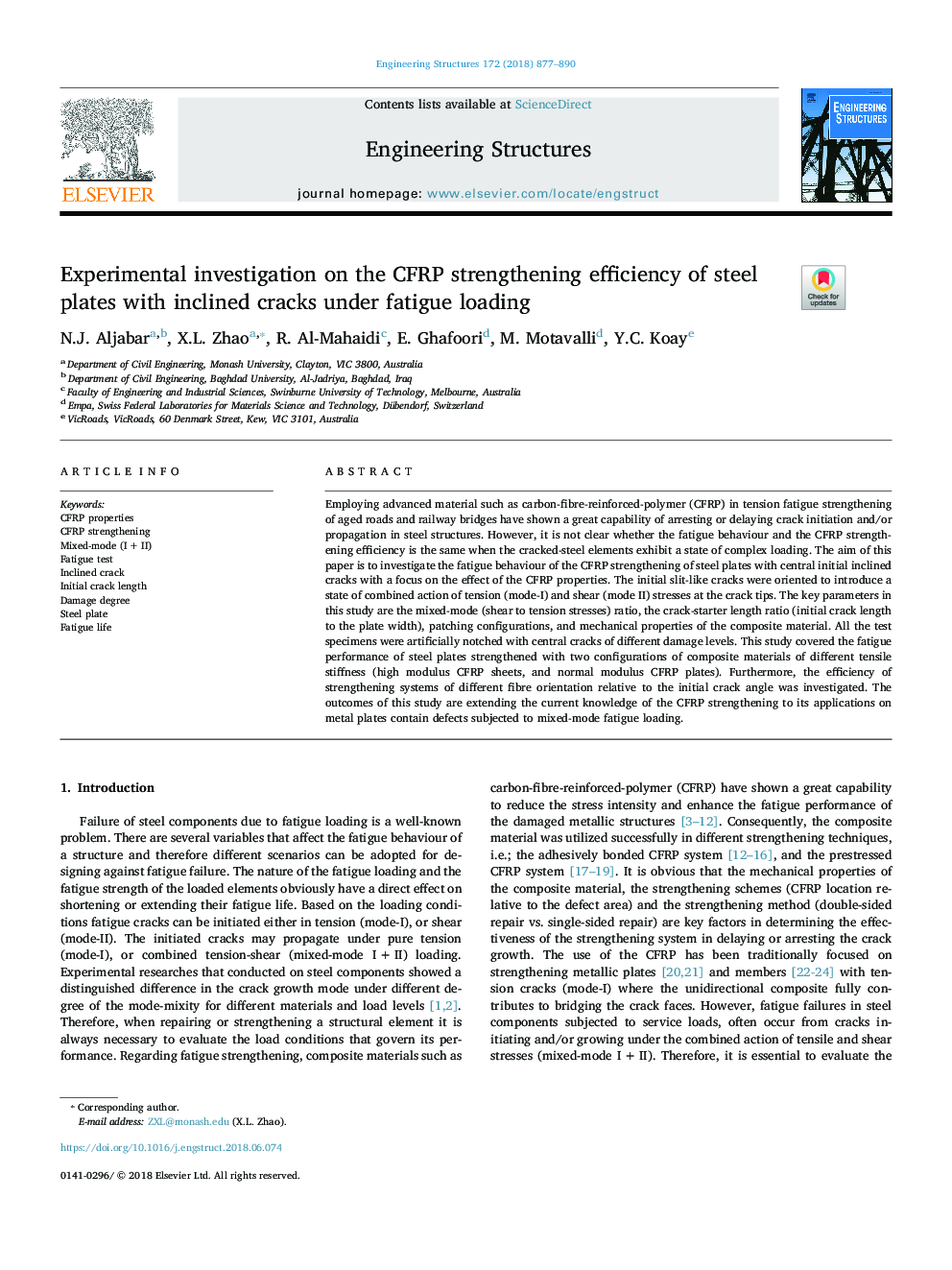| Article ID | Journal | Published Year | Pages | File Type |
|---|---|---|---|---|
| 6736428 | Engineering Structures | 2018 | 14 Pages |
Abstract
Employing advanced material such as carbonâfibreâreinforcedâpolymer (CFRP) in tension fatigue strengthening of aged roads and railway bridges have shown a great capability of arresting or delaying crack initiation and/or propagation in steel structures. However, it is not clear whether the fatigue behaviour and the CFRP strengthening efficiency is the same when the cracked-steel elements exhibit a state of complex loading. The aim of this paper is to investigate the fatigue behaviour of the CFRP strengthening of steel plates with central initial inclined cracks with a focus on the effect of the CFRP properties. The initial slit-like cracks were oriented to introduce a state of combined action of tension (mode-I) and shear (mode II) stresses at the crack tips. The key parameters in this study are the mixedâmode (shear to tension stresses) ratio, the crack-starter length ratio (initial crack length to the plate width), patching configurations, and mechanical properties of the composite material. All the test specimens were artificially notched with central cracks of different damage levels. This study covered the fatigue performance of steel plates strengthened with two configurations of composite materials of different tensile stiffness (high modulus CFRP sheets, and normal modulus CFRP plates). Furthermore, the efficiency of strengthening systems of different fibre orientation relative to the initial crack angle was investigated. The outcomes of this study are extending the current knowledge of the CFRP strengthening to its applications on metal plates contain defects subjected to mixed-mode fatigue loading.
Keywords
Related Topics
Physical Sciences and Engineering
Earth and Planetary Sciences
Geotechnical Engineering and Engineering Geology
Authors
N.J. Aljabar, X.L. Zhao, R. Al-Mahaidi, E. Ghafoori, M. Motavalli, Y.C. Koay,
